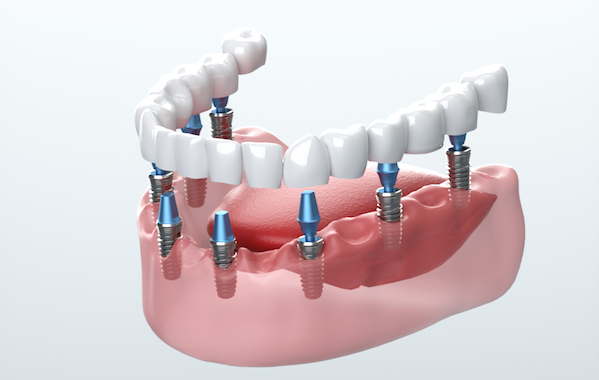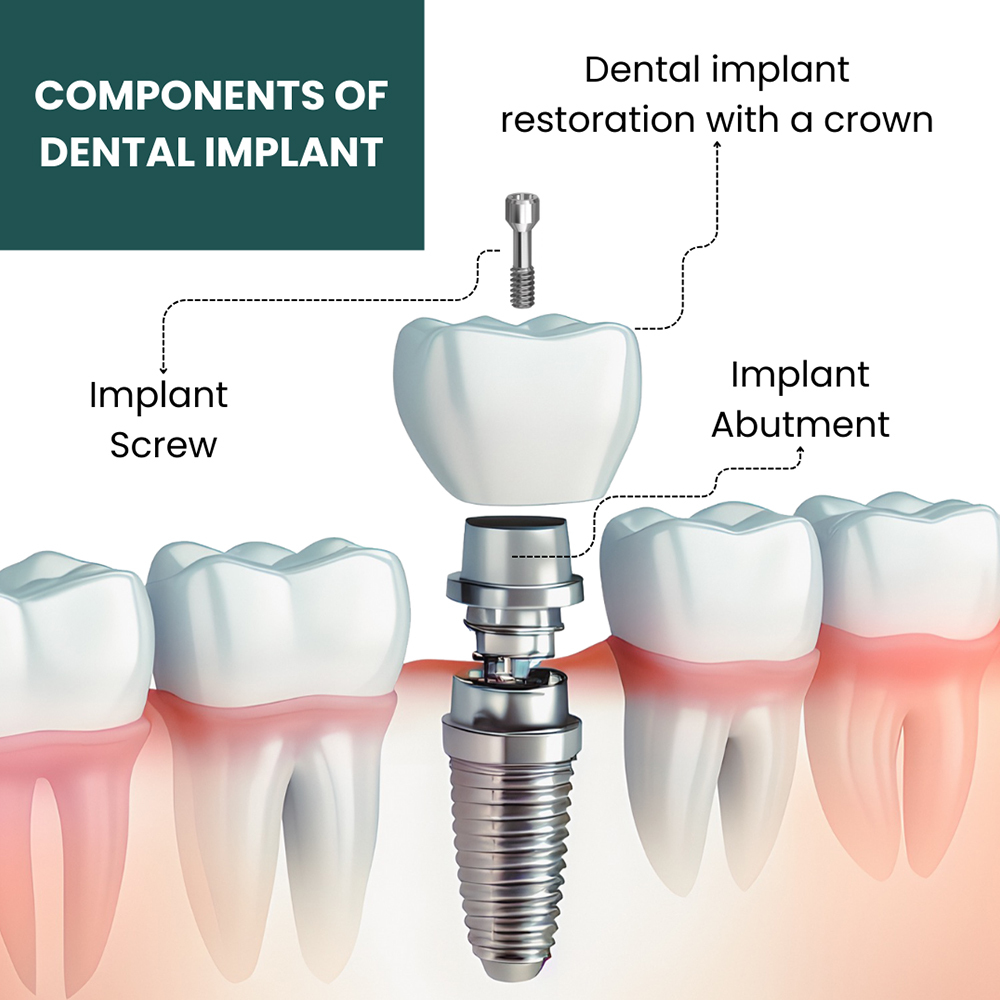6 Easy Facts About Dental Implants Explained
Table of Contents3 Simple Techniques For Dental ImplantsMore About Dental ImplantsThe Definitive Guide for Dental ImplantsThe smart Trick of Dental Implants That Nobody is Talking About
are medical gadgets operatively dental implanted into the jaw to restore an individual's capability to eat or their appearance. They offer support for artificial (fake) teeth, such as crowns, bridges, or dentures. When a tooth is lost as a result of injury or illness, a person can experience difficulties such as fast bone loss, faulty speech, or adjustments to chewing patterns that lead to pain.

Framework of The Oral Implant System selecting dental implants, talk to your oral copyright about the possible benefits and threats, and whether you are a candidate for the procedure. Things to think about: Your general health is a crucial factor in identifying whether you are a good candidate for dental implants, the length of time it will require to heal, and how much time the dental implant may remain in location.
Smoking cigarettes may affect the healing procedure and reduce the long-term success of the dental implant. The recovery process for the dental implant body might take numerous months or longer, throughout which time you commonly have a momentary joint in area of the tooth. the oral implant treatment: Very carefully adhere to the oral hygiene guidelines given to you by your oral supplier.
Dental Implants - Truths
Implant failing can result in the requirement for one more operation to take care of or change the dental implant system. Restores the ability to eat Recovers cosmetic look Helps keep the jawbone from shrinking due to bone loss Preserves the health of the surrounding bone and periodontals Aids maintain nearby (neighboring) teeth stable Boosts lifestyle Damage to surrounding all-natural teeth throughout dental implant placement Injury to the surrounding tissues during surgical procedure, such as sinus opening Injury throughout surgery (for instance, fracture of surrounding jawbone) Poor function, such as seeming like the teeth do not attack with each other usually An experience that the tooth hangs or turning in area resulting from an abutment screw loosening Implant body failing (looseness of the implant body) because of systemic infection, which may be more probable in people with unchecked diabetes because of neighborhood infection in bone and gums sustaining the dental implant body due to postponed healing, which might be most likely in clients who smoke Problem cleaning up the gum tissues around the implant, leading to inadequate dental health Neglected periodontal condition Post-surgical tingling due to nerve impingement or damage Always inform health care suppliers and imaging specialists that you have dental implants before any magnetic resonance imaging (MRI) or x-ray procedures.
FDA is not knowledgeable about any negative occasions reported for MRI or x-ray treatments with dental implants. Dental implants systems are normally made from products that comply with worldwide consensus criteria of the International Organization for Standardization (ISO) or ASTM International. These standards have details of what makes a risk-free product.
Other materials such as gold alloys, cobalt-based alloys, titanium alloys, or ceramic products are occasionally utilized. The safety profiles of go to the website these products are popular. Dental dental implant systems are assessed according to international consensus standards. Biocompatibility screening, to show that physical call with the gadget does not trigger issues like inflammation or sensitive response, is component of the analysis that helps make sure the materials in the dental implant system are secure and do not cause unfavorable results when dental implanted in people.

Getting The Dental Implants To Work
Some individuals are not qualified for oral implant surgical treatment. It is for dental specialists to operate on individuals with: intense illnessuncontrollable metabolic diseasebone or soft click here for info tissue illness or infectionIf these problems are resolved, an individual can have the surgery. Dental Implants. In, oral specialists avoid operating people with: If individuals with any of the above go through oral implant surgical treatment, there is a greater risk of the dental implant failing
Some individuals have a jawbone abnormality that avoids sufficient bone for a dental implant from developing. In such cases, a doctor may require to do a ridge adjustment. This entails lifting the gum to expose the location of flawed bone. The doctor will certainly then utilize a bone or bone replacement to repair and accumulate the location.
Oral dental implant surgical procedure is a personalized process. It's not the very same for useful link every person. But the following offers a basic introduction of what you can anticipate your dental professional, dental cosmetic surgeon, periodontist or prosthodontist to do: Put the implant surgically. Offer you time to heal. Affix the message and last crown, bridge or denture.
Next, your doctor will thoroughly place the dental implant into your jaw. Your doctor will rearrange your gums and shut the incision with stitches (Dental Implants). If your implant is near the front of your mouth, your dental professional will make a temporary tooth for you to wear up until you recover. This way, you will not have a void in your smile while you recoup.
The Greatest Guide To Dental Implants
Throughout the recovery phase, your jawbone should fuse to the oral implant. This process can take anywhere from 3 to 9 months.
As soon as your implant heals, your dental practitioner can affix the joint (small connector blog post) and your final repair (crown, bridge or denture). This typically takes regarding one hour to finish and might call for a second minor surgery. You should not really feel any kind of pain throughout your oral implant treatment due to the fact that your provider will certainly use medication to numb your gums.
Comments on “Dental Implants for Beginners”